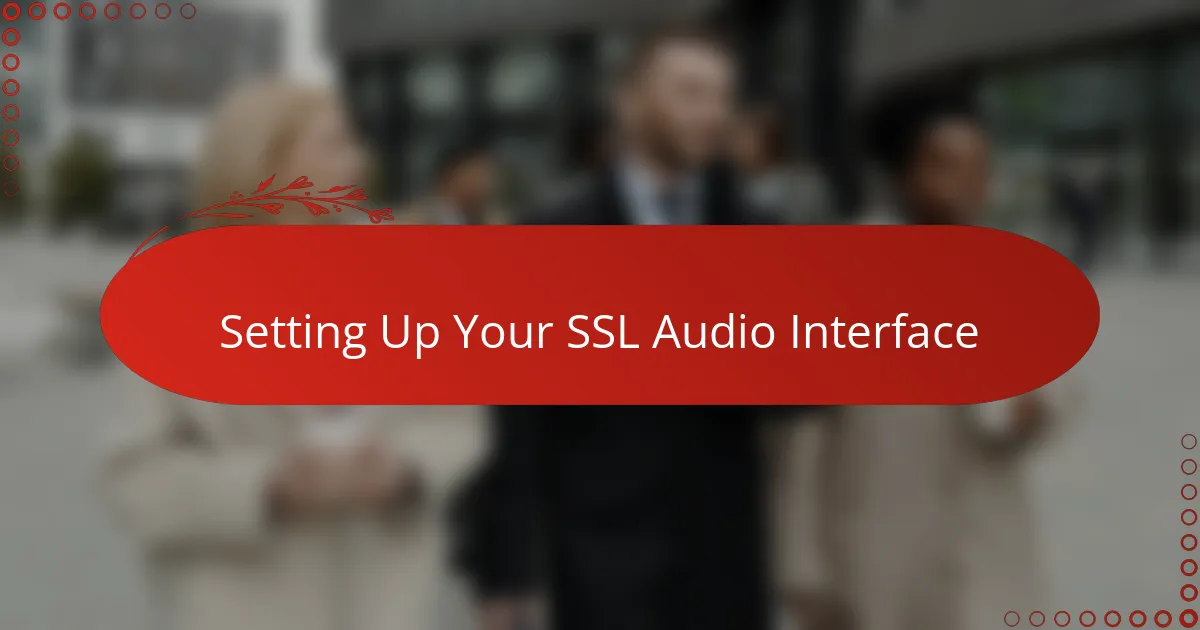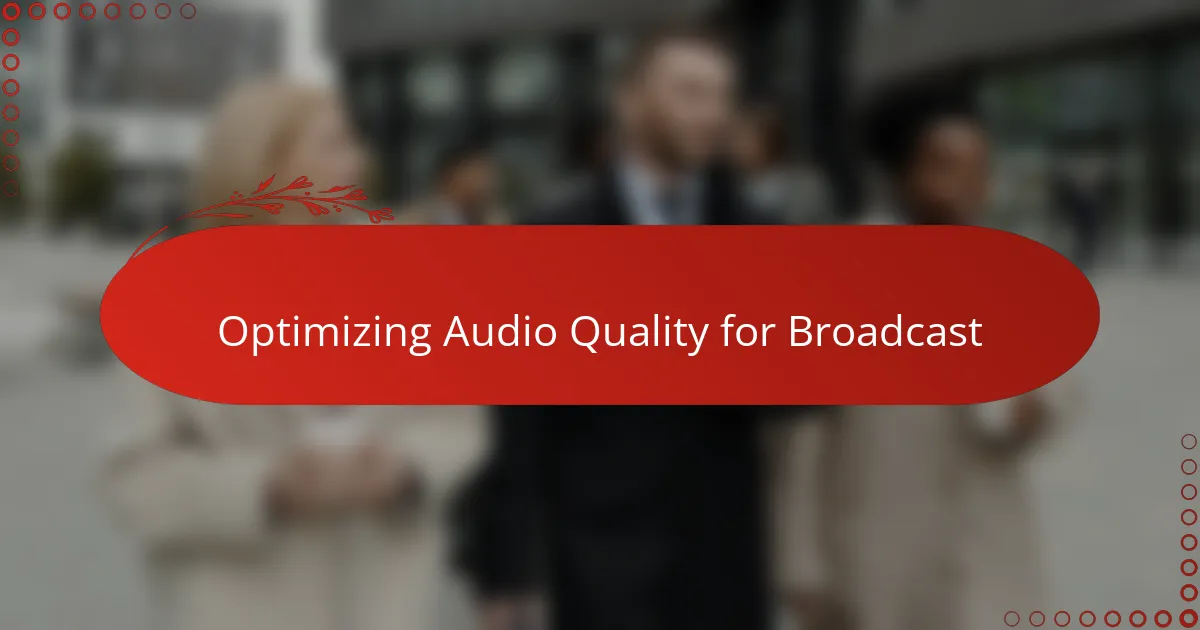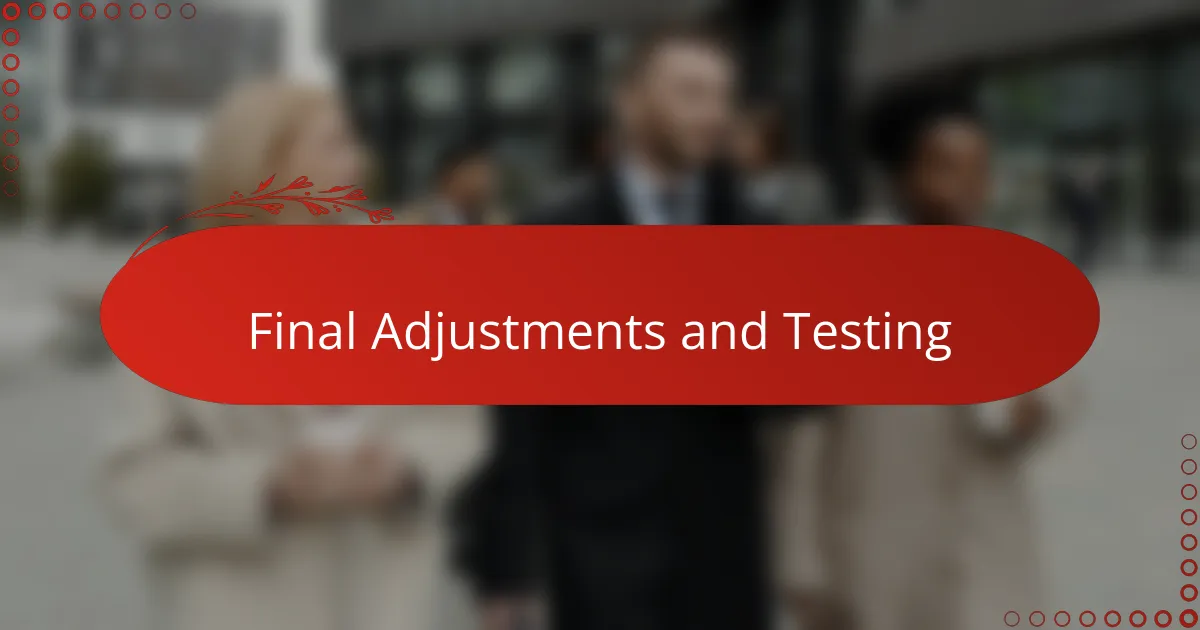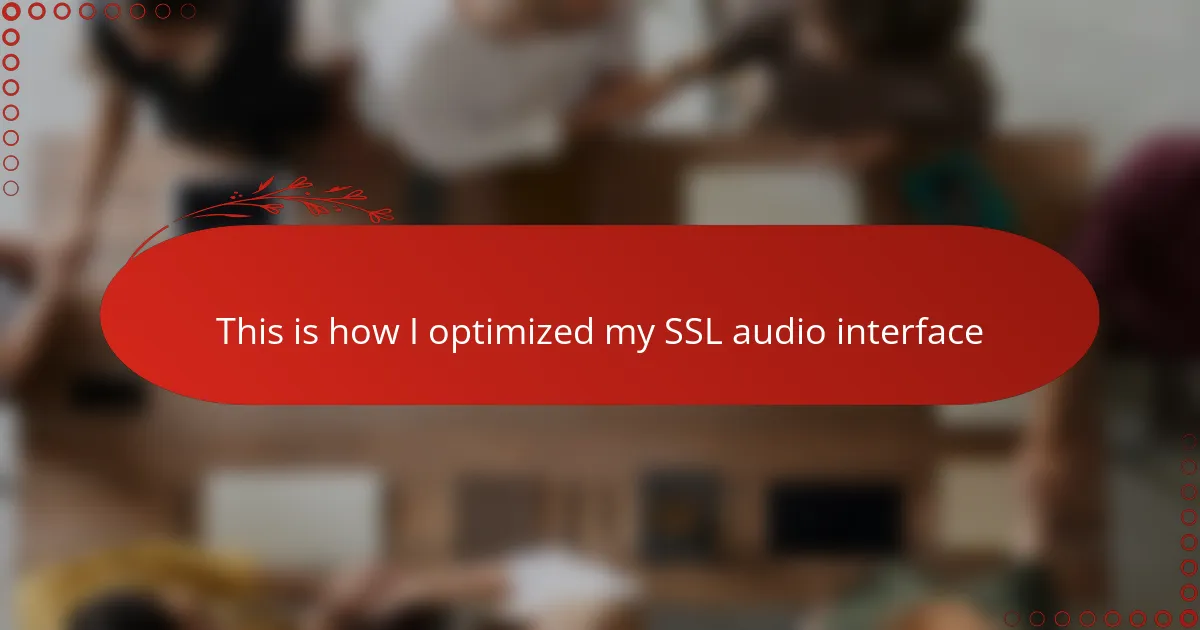Key takeaways
- SSL audio interfaces are renowned for their sound quality and robustness, making them ideal for professional broadcasting.
- Key features such as low-latency monitoring and flexible sample rate control are crucial for seamless live audio mixing.
- Setting gain levels and optimizing EQ settings can significantly enhance audio clarity and overall listener experience.
- Efficient workflows can be achieved by labeling cables, creating presets, and maintaining a log of adjustments for easy reference.

Understanding SSL Audio Interfaces
When I first encountered SSL audio interfaces, I was struck by their reputation for pristine sound quality and robust build. These devices serve as the crucial bridge between your analog audio gear and digital recording systems, converting sound with remarkable clarity. Have you ever wondered what sets SSL apart in a crowded market? For me, it’s their legacy rooted in professional studios, ensuring dependable and transparent audio capture every session.
Diving deeper, SSL interfaces often come equipped with high-quality preamps and converters that maintain the integrity of the source signal. I recall struggling with audio noise in other interfaces until I switched to SSL, which instantly felt like a breath of fresh air—clean, detailed, and reliable. This kind of performance isn’t just technical jargon; it translates directly into more engaging and professional-sounding broadcasts.
What really fascinates me is how SSL interfaces balance versatility with ease of use. Even if you’re not an audio engineer by trade, their intuitive design helps you focus on creativity rather than wrestling with complicated setups. Isn’t it reassuring to have a piece of equipment that works so seamlessly behind the scenes, allowing your on-air content to shine?

Key Features for Radio Broadcasting
When I optimized my SSL audio interface for radio broadcasting, I quickly realized that features like low-latency monitoring and multiple input channels are absolute game-changers. These capabilities make live mixing smoother, which is crucial when you’re juggling voice, music, and effects in real time. Have you ever been caught off guard by latency delays during a live show? That frustration vanished once I dialed in these key features.
Another aspect I found invaluable is the flexibility SSL offers with sample rates and bit depths. For radio, where clarity and fidelity matter but file sizes also count, having control over these settings lets me strike the perfect balance. It’s satisfying to know I’m sending out crystal-clear audio without overloading my workflow.
Finally, the rugged build of SSL interfaces gave me peace of mind during unpredictable broadcast conditions. Whether I’m working from a busy studio or on location, I trust that my gear won’t fail me. Isn’t it comforting to have equipment that matches your professional dedication? I can’t imagine broadcasting without that reliability now.

Setting Up Your SSL Audio Interface
Setting up my SSL audio interface was surprisingly straightforward, yet it required attentive calibration to get everything just right. I started by carefully connecting all inputs and outputs, making sure each cable was securely attached—there’s nothing worse than loose connections causing unwanted noise during a live broadcast. Have you ever experienced that sudden crackle mid-show? Trust me, a solid physical setup saves you from that headache.
Next, dialing in the preamp levels was a bit of an art for me. I remember adjusting them slowly while monitoring the input signal to avoid clipping but still capture a strong, clear audio presence. It took some patience, but once those levels were optimized, the difference was night and day—the sound was warm, detailed, and interference-free.
Finally, I dove into configuring the interface’s control software, tweaking buffer sizes and clock sources to minimize latency without sacrificing stability. It felt a bit technical at first, but once I understood the impact of each setting, the setup became a satisfying process of fine-tuning. Don’t you find it rewarding when your equipment starts working exactly how you want? That’s the moment I knew my SSL interface was ready to fuel seamless, professional broadcasts.

Optimizing Audio Quality for Broadcast
Optimizing audio quality for broadcast is all about capturing the cleanest, most accurate sound possible with your SSL interface. I remember the first time I tweaked the EQ settings carefully—suddenly, voices came through clearer and music sounded fuller, which made me realize how subtle adjustments can transform a broadcast from decent to captivating. Have you ever noticed how a small change in tone can completely change the listener’s experience?
One crucial step I found essential was setting the gain staging just right to avoid any distortion while still preserving the natural dynamics of the audio. It took some trial and error, but honing this balance made my live shows sound polished and professional, free from that harsh, compressed feel that can make broadcasts tiring to listen to. Don’t you agree that nothing ruins the flow like unexpected audio clipping?
Lastly, I made sure to use the SSL’s built-in digital converters to their fullest potential, choosing sample rates and bit depths that offered both clarity and efficiency. Fine-tuning these technical aspects initially felt overwhelming, but once I saw how they impacted the final output, it became clear that investing time here is key to delivering a broadcast that holds listeners’ attention. Have you ever wondered how much difference a well-optimized interface can make? For me, it’s been a game-changer.

Troubleshooting Common Issues
One challenge I often faced early on was intermittent audio dropouts. It was frustrating, especially mid-broadcast, until I discovered that a simple USB cable swap and switching to a dedicated USB port fixed the issue. Have you ever thought a mysterious glitch was your fault, only to realize a hardware tweak was all it took? That taught me to always start troubleshooting with the basics.
Another common hiccup was latency spikes during live shows, which threw off my timing and felt unprofessional. Adjusting the buffer size in the interface’s software proved to be a delicate balance between smooth playback and low latency. It took some patience and trial-and-error, but watching the latency vanish gave me a real sense of control—like wrangling a wild beast into submission.
Lastly, ground loop hums and buzzing noises caught me off guard more than once. After some digging, I learned that proper grounding and using balanced cables were the unsung heroes in eliminating this. Have you noticed how such subtle fixes can make a huge difference to the overall sound quality? That moment when the buzz disappears is surprisingly satisfying—proof that careful troubleshooting pays off.

Personal Tips for Efficiency
Efficiency, for me, has always meant working smarter, not harder, with my SSL audio interface. One trick I picked up early was labeling all my cables and inputs clearly—sounds simple, right? But this small step saved me countless moments of scrambling during live shows when every second counts. Have you ever had that panic trying to find the right input in the heat of a broadcast? Trust me, organization is a lifesaver.
Another tip that transformed my workflow was creating presets tailored to different program types—interviews, music shows, or talk segments. Setting these up took some time upfront, but switching between them became effortless, letting me focus on content rather than fiddling with settings mid-broadcast. It makes me wonder why I didn’t do this sooner; wouldn’t you agree that presetting saves so much stress?
I also made it a habit to document every tweak and adjustment I made in a simple log. This became my go-to reference whenever I needed to replicate a sound or troubleshoot an issue. There’s a strange sense of confidence in knowing you have a playbook built from your own experience. Have you ever felt that relief when a tough problem solves itself because of good notes? That’s the kind of efficiency that keeps a broadcast smooth and professional.

Final Adjustments and Testing
Final adjustments and testing were where everything truly came together for me. I remember sitting in the studio, carefully listening to each channel and making tiny tweaks—sometimes just a fraction of a decibel—to get the perfect balance. Have you ever noticed how those small changes suddenly bring clarity and warmth that you didn’t expect at first? It’s like tuning a musical instrument until it sings.
Testing the SSL interface in real broadcast scenarios was illuminating. I ran through live mixes, checked for any latency hiccups, and monitored for noise or distortion. Catching a subtle buzz early on saved me from a potential on-air disaster, and it reminded me that thorough testing isn’t just a step—it’s peace of mind.
One key insight I gained was the importance of consistent monitoring through both headphones and studio monitors. Sometimes, what sounds flawless on headphones might reveal hidden issues on speakers. Do you find that testing from multiple listening perspectives helps you catch those sneaky glitches too? For me, this practice transformed my confidence going live.
